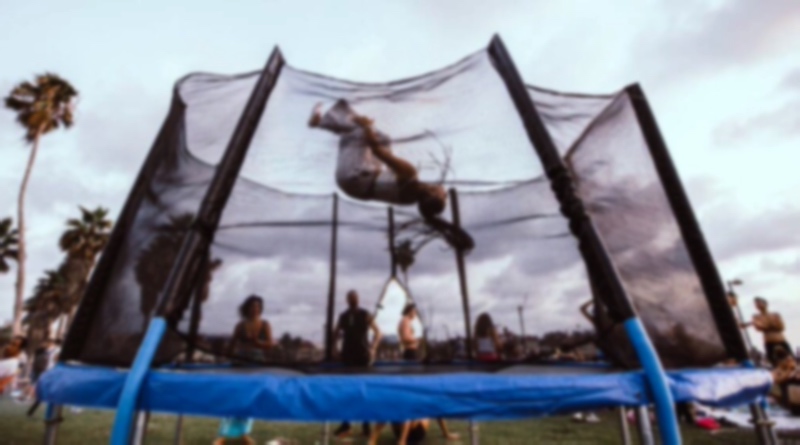Are you the parent of a cheerleader who’s been nagging you to buy a trampoline they can use at home?
At first your stance was a strict “no”… but after months of constant verbal bombardment, you’ve actually started to consider it.
You may even find some logic in their never-ending arguments:
- “I can practice my skills at home!”
- “If I get my (insert skill) I can be on a higher level team next season!”
- “Don’t you want me to be active and play outside?”
They can be quite convincing can’t they?
But you’ve also heard of all the horror stories; that trampolines cause injury, they will ruin your child’s technique and all the good money you’ve paid to get them ready for tryouts will be wasted.
So where is the truth in all of this?
Well, as a Certified Gymnastics coach and the co-owner of a gym, I’m hoping this article will help you decide whether a home trampoline for your cheerleader is a good fit… as it’s one of the most common questions I get from parents.
But first, let’s talk about the most obvious point…
| This post was created by a guest author. Any information and opinions expressed are solely those of the author and may not reflect our views. Want to be a guest author? Here’s how. |
Are Trampolines Actually Dangerous & Unsafe?
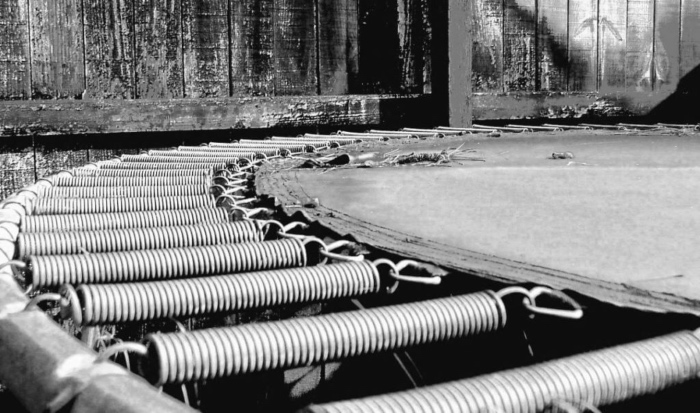
The short answer: it depends.
Like any tool, if you buy the wrong kind and use it incorrectly then yes, trampolines can be unsafe and cause injuries. Just like home Air Tracks or even wedge mats.
But the good news is that home trampoline designs have come a long way in the past 10 years and should you follow my 3 simple rules, your cheerleader can enjoy a safe and fun experience on their home trampoline.
You might also like: What to Do If You Didn’t Make the Team
Rule #1: Buy The Right Brand of Home Trampoline
In a professional setting (i.e in a gymnastics gym or any other sporting facility) we generally use official Olympic-sized trampolines.
These have stiffer beddings, are much larger and their tighter springs produce an extreme amount of bounce; not ideal for your backyard!
However, many home trampolines adopt a similar design (springs + bedding) and the downside is that unless the child has been taught proper body control, they will surely land on the springs at some point.
Not only does it hurt to land on these springs, but limbs can get stuck between the gaps, and the springs themselves can get damaged. And replacing them can be quite costly and a total nightmare.
So for home use, I always recommend parents go for a brand called SpringFree Trampoline.
Their name is a direct reflection of their technology. Take a look at the video below…
Are these more expensive than the cheaper, spring & bedding types of trampolines? Absolutely.
But trust me, you can’t put a price on safety.
And no, I’m not some paid ambassador for the company either; I just believe they have a great product.
It’s the only trampoline I recommend to my own athletes and their parents.
Rule #2: Always Jump Under Supervision
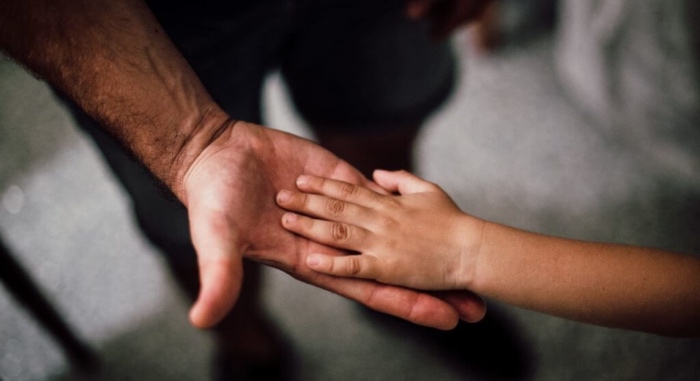
While the concept of adult supervision (or a buddy system) is obvious, it’s still shocking to me how many parents don’t adhere to it.
It may be because some parents think they need to babysit their kids like a hawk while they bounce.
Not true.
Here’s the real reason kids should be jumping under supervision:
If something goes wrong, or someone gets hurt, the immediacy of care is the number one factor in ensuring they don’t end up with a life-long injury.
It’s the same reason you shouldn’t let your kids swim in a pool by themselves; should they start drowning, every second counts!
For older kids a buddy system is a good alternative. The “buddy” should know exactly where to find a parent (or another responsible adult) in case of an emergency.
Rule #3: Only One Jumper At A Time
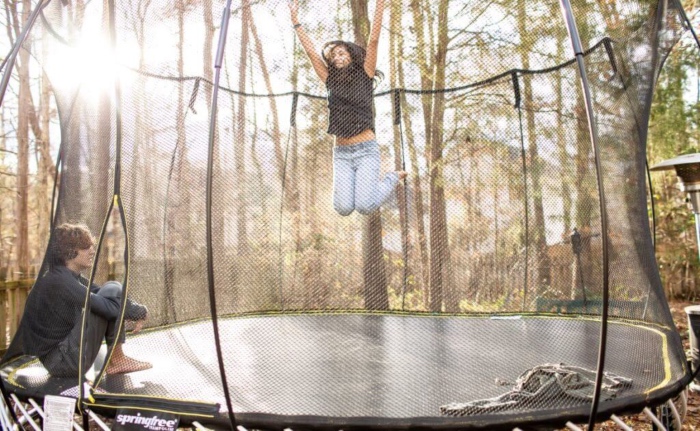
While home trampolines don’t produce as much bounce as their Olympic counterparts (spring or non-spring based), they are still susceptible to the laws of physics.
This means that an accidental “double bounce” can occur.
What’s a double bounce? Basically, this is when the energy of one person gets transferred into the other, thus causing them to get “double” the bounce (and by extension, double the height) than originally anticipated.
Intentional double-bouncing is used as a tool by coaches on Olympic Trampolines for specific drills, but home based trampolines are not designed for this.
What’s more, when you aren’t expecting to get “double” the bounce as a jumper, you will fly off in an uncontrollable direction — usually over any kind of safety net.
An unintentional double bounce is one of the scariest things to not only experience, but to witness.
So be sure to do yourself and your kids a favor, and enforce the “one jumper” rule as if it was written in stone. And have strict consequences in place if the rule gets broken.
We think you’ll like this article too: Guide: The Top 7 Best Cheerleading Shoes (Ranked by Actual Athletes)
Now that we’ve covered safety, let’s talk about skill development...
Personally this is one of the biggest reason NOT to get a trampoline for cheerleaders (or any other type of competitive, acro-based athletes such as gymnasts, tumblers etc.)
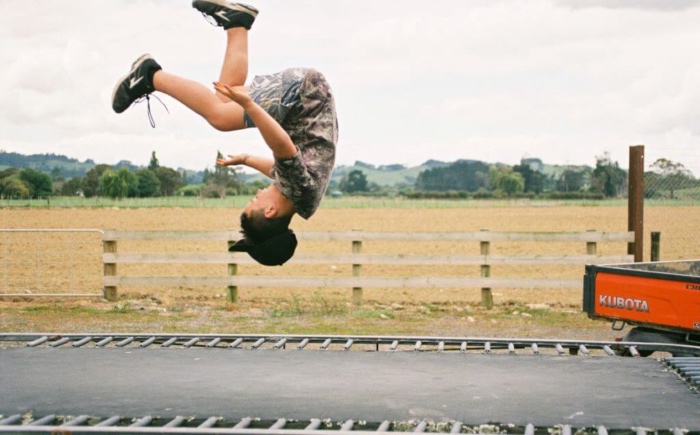
Because you, as a parent, pay good money so that I as a coach can use my 15+ years of experience to teach your child the skills they need with proper technique.
And the thing about technique (especially when a child is new and learning) is that initial motor patterns can become permanent habits.
We’re talking back tucks with the head thrown out. Back handsprings with legs apart and arms too wide. Round offs that are short and go sideways… and so on.
Consider this:
it takes about 500-1000 quality repetitions to build a motor pattern from scratch that will “stick”… but it takes anywhere from 3000-5000 reps to rebuild a bad habit!
Science has proven that it’s not practice that makes perfect. It’s perfect practice, that makes perfect.
And generally, when cheerleaders are on a trampoline, they aren’t aware of the small errors in technique they are making for reach rep of the skill they are throwing.
So before you know it, they come into the gym doing the complete opposite of what they have been taught.
I cannot tell you how many times I’ve had parents come to me from outside our program, seeking help to fix their child’s technique because they started throwing random stuff on their trampoline.
The money they spent on private lessons to reverse this error could have afforded them an extra year of cheerleading!
However, I would be cherry-picking if I didn’t mention that I’ve also had athletes who have benefited greatly by having a trampoline in their home where they could practice.
So you might be wondering…
What’s the difference between the two scenarios?
Well, the athletes who benefited from having a trampoline used it as a tool to refine the skills they had already mastered in the gym.
They didn’t use it as an opportunity to throw new or random skills they were still learning or hadn’t officially learned before.
Best of all, they respected my guidelines as a coach. If I told them they can’t be throwing certain skills or drills, they stayed away from them.
So if you’re going to consider getting a trampoline for your up-and-coming cheerleader, be sure to go over these rules and guidelines with them.
Make it crystal clear HOW a trampoline should be used and for WHAT purpose. Reach out to their coach and ask which skills they are allowed (or not allowed) to work on.
This will set them up for success and actually help accelerate their progress instead of hindering it.
If these home trampoline tips were helpful, please consider sharing this article with other parents, cheerleaders or even coaches!
Also, click here to read our other skills & training articles – including tips, tutorials, thoughts and more.
Stay safe, and happy bouncing!
About the author
Coach Sahil is the founder of Addicted To Tumbling and TumblingCoach.com, two resources that have become the “go-to” destination for coaches and athletes in the cheer & tumbling community. He is also the Co-Owner of a gym in Canada called CheerCore & author behind the best-selling book The Cheer Diet.

